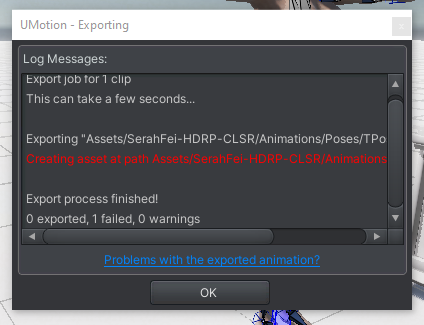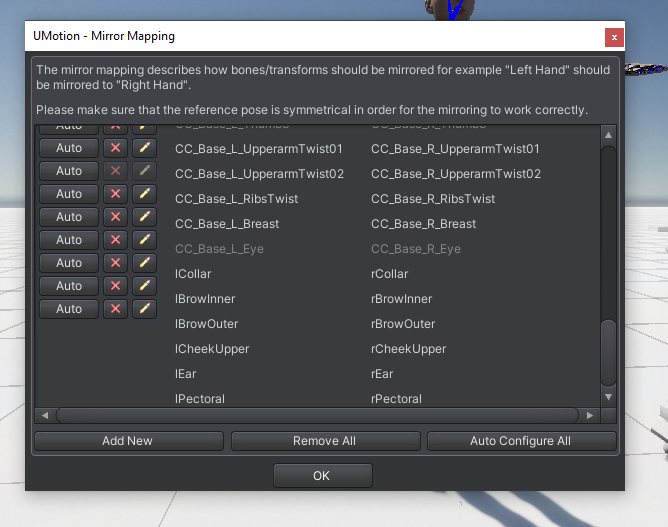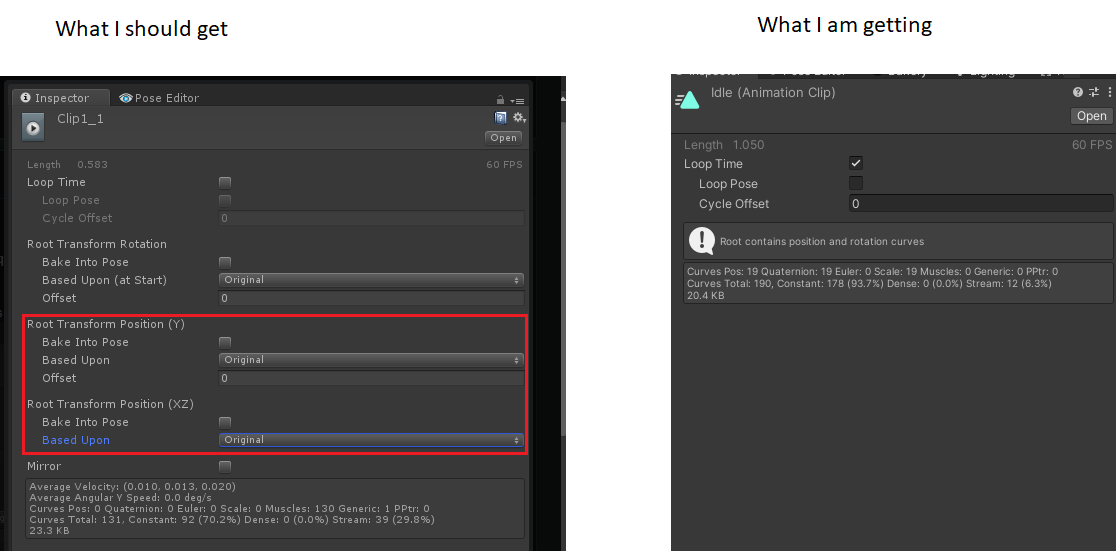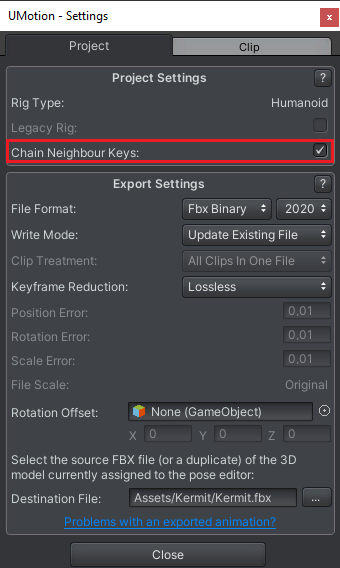
 wrist rotation slider
wrist rotation slider
I was wondering if a wrist or forearm rotation slider by axis could be added to the Umotion hands slider panel?
Another item would be in the clip editor if the animated properties title bar could have sort buttons in it like the info icon.
Sort by set keys up or down, default, alphabetic.
Thank you.

Hi,
thank you very much for sharing your ideas.
I've added your ideas to my ideas pool that I'm using to plan what features I'm going to implement in future versions of UMotion.
Best regards,
Peter

 Do I import multiple humanoid characters as generic to use them together in one project/scene?
Do I import multiple humanoid characters as generic to use them together in one project/scene?
To use multiple characters in a Umotion project do I or should I import or change to generic?
I would like to have one scene where I can animate multiple rigs and separate animators/animations are ok.
synching the characters movements would no doubt need one set of animations.
I get my characters through Blender to Unity fbx then into Mixamo and out as fbx for Unity. I import them in Unity as humanoids.
Will Umotion handle multiple generic characters? It only handles one humanoid in a project.And then as a generic do the animations based upon rig bone names all work across any humanoid to generic rig?
I have seen other responses to this using different detail but I thought I would post this one in a basic form to log this as an answer for others to find should they ask this.

I have the answer to my situation.
There is the Umotion project in the clip editor where one decides the generic or human that is with in the Unity project.
I don't know how I missed this except the leaning towards the term 'Project'. I didn't realize the two were different.
When I found Umotion and Mixamo solved all of my rig and animation needs after the last year of horrendous Unity problems I believe my vision was blinded. I now am back at this in light speed. And it looks like I can work on multiple model types in the same 'UNITY' project.
Umotion saved the day again. Thank you. I hope you leave this here as history.

 Clipname with folders
Clipname with folders
As export folder is done for the whole UMotion project, some kind of animations assets could use a structural location.
Animations such as, "Movements", "Attacks", etc could have their own directory.
When setting clip name with something such as "Movements/Walk01" we think we could resolve/workaround the "one export folder" per UMotion project.
But this lead to a failure




 Mirror Mapping Window - Vertically unaligned lines
Mirror Mapping Window - Vertically unaligned lines
When in Pose Editor using Mirror Mapping Window, verticality is not assured.
Texts are taller than button, causing some weird feelings when cumultative delta is greater than a line.
Clicking on buttons, act on previous lines.



Fixed in UMotion V1.26p03. The version was sent to the asset store and should be available soon.
Thanks again for reporting this issue.
Best regards,
Peter
 Different position on play mode_2
Different position on play mode_2
Hi I have the same problem as in this topic https://support.soxware.com/en/communities/1/topics/581-different-position-on-play-mode
Basically I make my animation in the clip editor, but when I export the clip and start the game, the object shifts its position.
I cant implement the solution in the topic because I cant get all the properties I should be getting when selecting the clip. Do you know what am I doing wrong ?


 Constraint for animation
Constraint for animation
Hello,
I am trying to find a constraint feature in UMotion.
For instance, if my character smashed a giant sword to the ground and the sword is stuck on the ground. I want to constraint or "lock" the position/rotation of both hands of my character for the next 3-4 frames while I move all my other parts of the body.
Is there a feature that I can use for this kinda situation?

Hi,
thank you very much for your support request.
Yes. What you're looking for is called IK Pinning. With that feature you can pin the IK handles of your hands at their current world space position.
More information can be found in this video tutorial:
Please let me know in case you have any follow-up questions.
Best regards,
Peter
 Export Error - Node Not Found in FBX
Export Error - Node Not Found in FBX
File Format: FBX Binary
Write Mode: Export As New File
Clip Treatment: One File Per Clip
When I try exporting a clip I get a "X not found in FBX" error.
All node names are unique.

Hi,
thank you very much for your support request.
This error message indicates, that there is a transform in your animated 3D model in Unity / UMotion that does not exist in the FBX file you are trying to export to.
Sometimes if your FBX contains none unique names, Unity renames those transforms on import. UMotion knows nothing about that, but as soon as you try to export your animation into the FBX file, UMotion is not able to find the re-named transform in the FBX file because it uses a different name there. To fix this, open the FBX in a 3D modeling application of choice and correct the bone/transform names so that the naming is the same as in Unity.
Please let me know in case you have any follow-up questions.
Best regards,
Peter

Fixed. UMotion doesn't like multiple GameObjects in the Rig hierarchy to have the same name.
Make sure every GO has a unique name.

 Is it possible to add keys for individual axes?
Is it possible to add keys for individual axes?
Is it possible to add individual keys for the x,y,z components of the position and rotation transforms? It is doable using Unity's in built animation window, but not in Umotion

Hi,
thank you very much for your support request.
There are only rare cases where it is useful to create keys only for one axis. That's why by default, UMotion chains the keys on all 3 axis together. You can change that behavior by going into the settings (click on the gear icon in the Clip Editor), then disable the "Chain Neighbor Keys":

Please let me know in case you have any follow-up questions.
Best regards,
Peter

 export fbx wrong animation crack
export fbx wrong animation crack
i export walk animation made by u motion the leg alway swing side wrong direction

Hi,
thank you very much for your support request.
Please update your UMotion version to the latest version from the asset store. Please also check out the "Exporting Animations FAQ". It contains a collection of the most common mistakes when exporting an animation. Usually when exporting to FBX, the "Update Existing File" mode is recommended (and is the default in the new UMotion versions; see FAQ for more info).
In case this doesn't solve your issue, provide some further information (a screenshot of your export settings, a screenshot showing the problem, are you using humanoid or generic,...).
Thank you very much.
Best regards,
Peter
Customer support service by UserEcho


